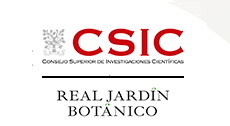Scientific Area
Ultramafic ecosystems as a macroecological model
ID: 613 / 244
Category: Abstract
Track: Pending
Proposed Symposium Title: Ultramafic ecosystems as a macroecological model
Authors:
Catherine Hulshof1, Marko Spasojevic2, Claudia Garnica-Díaz3, Nishanta Rajakaruna4,5
Affiliations: 1 Department of Biology, Virginia Commonwealth University, United States of America 2 Department of Evolution, Ecology, and Organismal Biology, University of California Riverside, United States of America 3 Biology Department, University of Florida Gainesville, United States of America 4 Biological Sciences Department, California Polytechnic State University, United States of America 5 Unit for Environmental Sciences and Management, North-West University, South Africa
Abstract:
Ultramafic ecosystems are renowned for high endemism and habitat specialization. Although ultramafic ecosystems are important model systems for ecological and evolutionary theory, their importance in macroecology has not yet been fully realized. We argue that ultramafic ecosystems create an appealing and tractable macrosystem for understanding global patterns of plant diversity and responses to land use and climate change. We provide an overview of how such a global macrosystem could be used to understand interactions between climatic and edaphic properties and their influence on plant form and function at a global scale. Furthermore, we propose new avenues of interdisciplinary research that emerge from a macro-scale approach and that create new opportunities for international collaborations to understand these diverse ecosystems. Specifically, we provide three examples of this approach: first, by highlighting a recent synthesis of the edaphic control on plant diversity (Hulshof and Spasojevic 2020); second, by demonstrating possible soil-climate interactions and the diverse plant form and function of tropical ultramafic ecosystems (Garnica-Diaz et al. 2022); and lastly, by summarizing a comparison of a key plant functional trait – specific leaf area – across different biogeographic regions (Samojedney et al. 2022). We end with a ‘call to action’ to compile and disseminate a global GIS database of ultramafic soils, which will enable the types of macroecological questions we aim to address in future collaborations.




